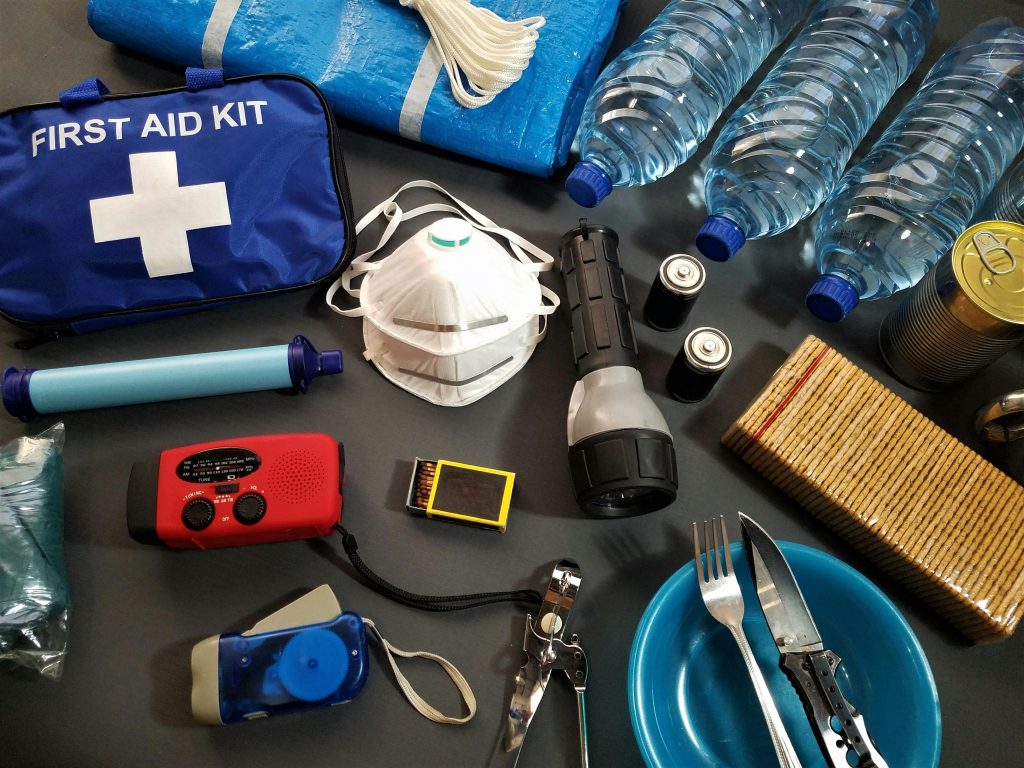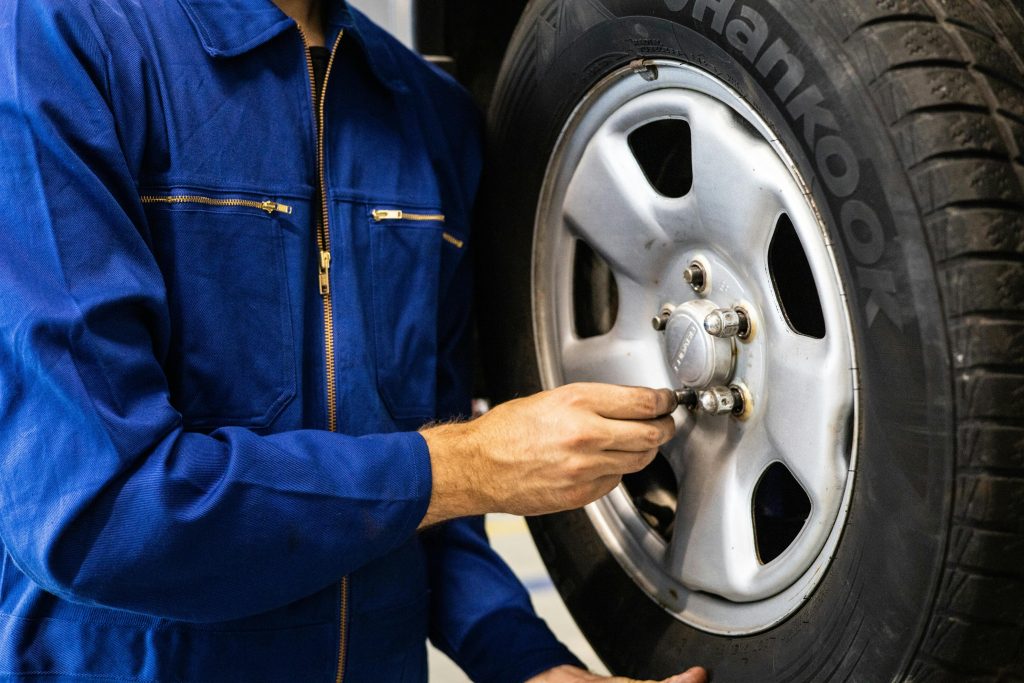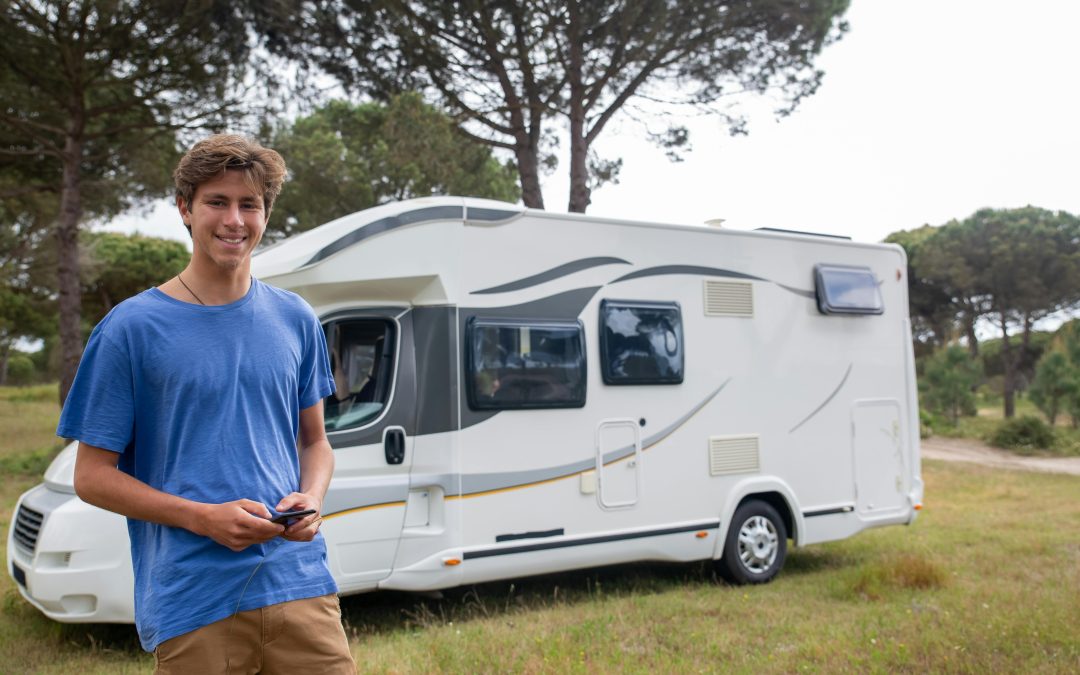Hit the road with confidence and peace of mind! RV travel offers the freedom to explore breathtaking destinations and create lasting memories. But venturing out in your mobile home also necessitates careful preparation to ensure a safe and enjoyable journey. Whether you’re a seasoned RV enthusiast or a curious first-timer, being equipped with the right knowledge and gear can significantly enhance your travel experience.
This article delves into three crucial aspects of RV travel safety and preparedness:
- Emergency Kits and Tools: We’ll guide you on assembling essential supplies to handle unexpected situations, from minor mishaps to potential emergencies.
- RV Maintenance and Inspections: Learn how to properly maintain your RV to minimize the risk of breakdowns and ensure your vehicle is in top condition for your adventures.
- Weather and Road Conditions: Discover resources and tips to stay informed about weather forecasts and road closures, so you can navigate the elements and potential hazards with confidence.
By following these comprehensive tips and insights, you can transform your RV trip into a worry-free adventure, allowing you to fully embrace the excitement of exploring the open road.
 Photo by Roger Brown
Photo by Roger Brown
Emergency Kits and Tools
Hitting the road in your RV is an exciting adventure, but being prepared for unexpected situations is crucial for a safe and enjoyable journey. Assembling a well-stocked emergency kit is your first line of defense against minor mishaps or emergencies.
Essential Items:
These core items should form the foundation of your RV emergency kit:
-
First-Aid Kit: A well-stocked first-aid kit is vital for addressing minor injuries and illnesses on the road. Ensure it contains bandages, antiseptic wipes, pain relievers, and any personal medications you or your travel companions require. Labeling the contents of your kit can save precious time in an emergency when finding specific supplies is critical.
-
Flashlights and Extra Batteries: Reliable light is essential in emergencies. Pack a flashlight and plenty of extra batteries to navigate darkness or unexpected breakdowns.
-
Non-Perishable Food and Water: Having a supply of non-perishable food and water can sustain you if you become stranded or encounter delays. A general guideline is to pack one gallon of water per person, per day, and enough non-perishable food to last for at least 3 days.
-
Portable Phone Charger: A portable phone charger ensures you can stay connected and call for help if your vehicle’s battery dies or you’re unable to access a power source.
-
Maps and Compass: Technology can fail, so having a physical map and compass as a backup is essential. Knowing how to use a map and compass can be a valuable skill, especially in remote areas.
Additional Tools and Equipment:
Consider adding these versatile items to your emergency kit for increased preparedness:
-
Jumper Cables: Jumper cables can revive a dead battery and get you back on the road quickly.
-
Tire Repair Kit and Inflator: Flat tires are a common occurrence. A tire repair kit and inflator allow you to address minor punctures and get back on your journey.
-
Multi-Tool: A multi-tool is a compact and versatile problem-solver. It can handle various tasks, from tightening loose screws to opening cans.
-
Emergency Blankets: These lightweight, heat-reflective blankets can help retain body heat and keep you warm in case of an unexpected night outdoors.
Customizing Your Kit:
Tailor your emergency kit to your specific travel needs and destination:
- Destination Considerations: If traveling to areas with extreme temperatures, pack additional items like sunscreen, insect repellent, or hand warmers.
- Family and Pet Needs: For families with young children, include diapers, baby wipes, and any necessary medications. Traveling with pets? Don’t forget pet food and a pet first-aid kit.
By assembling a comprehensive emergency kit and considering these customization tips, you can venture out with confidence, knowing you’re prepared to handle a wide range of situations on the road.
 Photo by Artem Podrez
Photo by Artem Podrez
RV Maintenance and Inspections
Just like any vehicle, regular maintenance is essential for keeping your RV in top shape and preventing unexpected breakdowns on the road. Here’s a breakdown of key maintenance checks and pre-trip inspections to ensure a smooth and safe journey:
Regular Maintenance:
-
Engine and transmission: The recommended intervals for oil changes, fluid level checks, and filter replacements can vary depending on your RV’s make and model. Consult your owner’s manual or refer to the National Highway Traffic Safety Administration (NHTSA) website for specific recommendations: https://www.nhtsa.gov/ Following a consistent maintenance schedule can help prevent costly repairs down the road.
-
Brakes and tires: Regularly inspect your brakes and tires for signs of wear and tear. Ensure proper tire inflation according to the manufacturer’s recommendations on the placard typically located on the driver’s door jamb. Replace any worn or damaged brake pads, rotors, or tires promptly.
-
Battery and electrical systems: Check your battery’s charge and clean any corrosion from the terminals. Inspect your electrical system for any damaged wiring or malfunctioning components. Addressing minor electrical issues early can prevent more extensive problems later.
Pre-trip Inspections:
Before hitting the road, take some time to thoroughly inspect your RV and ensure everything is in working order:
-
Check for leaks and damage: Look for any visible cracks in the exterior walls or roof, soft spots on the floor or walls that might indicate water damage, and discoloration on ceilings or walls that could be signs of leaks. Early detection of water leaks is crucial to prevent costly repairs.
-
Verify all lights and signals are functional: Test your headlights, brake lights, turn signals, running lights, and any other exterior lights to ensure they’re working properly. Replace any burnt-out bulbs to maintain optimal visibility and safety on the road.
-
Inspect and secure all doors, windows, and hatches: Make sure all doors, windows, and hatches are securely closed and locked to prevent them from bouncing open while driving. Double-check all latches and locking mechanisms to ensure everything is secure.
Importance of Routine Professional Inspections:
While regular self-inspections are crucial, having your RV professionally inspected by a qualified technician at least once a year is highly recommended. A professional inspection can:
- Identify potential issues early: A trained technician can identify minor problems before they become major issues, saving you time, money, and potential headaches on the road.
- Ensure your RV remains in optimal condition: Routine professional inspections can help maintain your RV’s performance, safety, and overall value for years to come.
By following these maintenance and inspection tips, you can ensure your RV is in top condition and ready for your next adventure!
 Photo by Bibhash Banerjee
Photo by Bibhash Banerjee
Weather and Road Conditions
The text for “Weather and Road Conditions” is well-written and informative. Here are some minor suggestions for improvement:
-
Visual Aid: Consider adding an image depicting weather apps or traffic monitoring websites to illustrate the concept of using real-time resources.
-
Expand on Tips: The section on “Tips for driving in various weather conditions” could be expanded slightly to include one or two additional tips for each weather condition (rain, snow/ice, fog). For example, for rain, you could mention using windshield wipers effectively and avoiding using cruise control on wet roads.
Here’s the revised section incorporating these suggestions:
Mastering the Elements
Being prepared for the ever-changing weather is crucial for a smooth and enjoyable RV adventure. This guide equips you with the knowledge to plan, adapt, and navigate the elements confidently.
Planning for Weather Challenges:
- Know Your Destination’s Climate: Research typical weather patterns at your stops. Pack layers for fluctuating temperatures, rain gear for wet seasons, sun protection for hot climates, and winter gear for snowy regions.
- Identify Potential Hazards: Be aware of weather threats like flooding, high winds, or snowstorms along your route. Plan your travel schedule accordingly and adjust your route if necessary to avoid them.
Staying Informed on the Road:
- Visual Aid: [Insert an image of a smartphone displaying a weather app or traffic monitoring website]
- Real-time Resources: Utilize traffic apps, websites, or local radio stations to stay updated on current conditions. Be aware of potential delays, accidents, or road closures that might impact your travel time.
- Adapt Your Route: Be prepared to adjust your itinerary if you encounter unexpected road closures, detours, or hazardous conditions. Prioritize safety; don’t hesitate to change your plans to avoid potential risks.
Conquering Different Weather Conditions:
- Rain: Slow down significantly and increase following distance. Use windshield wipers effectively to maintain visibility. Avoid cruise control on wet roads, as it can limit your ability to react quickly.
- Snow/Ice: Reduce speed even further and be extra cautious on slippery surfaces. Utilize low-beam headlights for better visibility in falling snow. Avoid sudden braking or sharp turns, which can cause skidding.
- Fog: Reduce speed drastically and turn on low-beam headlights and fog lights (if equipped) to improve visibility for yourself and others. Maintain a safe following distance and avoid using high beams, which can reflect off fog and worsen visibility.
- Knowing When to Pull Over: In severe weather with limited visibility or treacherous road conditions, prioritize safety over reaching your destination on time. Pull over to a safe location and wait for the weather to improve before continuing your journey.
By following these tips and staying informed about weather and road conditions, you can navigate the elements with confidence and make your RV adventure a truly memorable experience.
Conclusion
By following the tips and best practices outlined in this guide, you can ensure your RV trip is not only enjoyable but also safe and secure. From assembling a comprehensive emergency kit to staying informed about weather conditions, a little preparation goes a long way in creating lasting memories on the open road.
Now that you’re equipped with this valuable knowledge, it’s time to chart your course, pack your bags, and embark on the RV adventure of your dreams! Explore breathtaking landscapes, discover hidden gems, and create lasting experiences with your loved ones. Remember, the journey itself is part of the adventure, so relax, savor the moment, and enjoy the freedom and flexibility that RV travel offers.
Resources
- American Red Cross – First Aid Kit Supplies: This webpage from the American Red Cross provides a comprehensive list of essential items to include in a first aid kit for emergencies. It covers everything from bandages and antiseptic wipes to pain relievers and personal medications. URL: https://www.redcross.org/get-help/how-to-prepare-for-emergencies/anatomy-of-a-first-aid-kit.html
- Ready.gov – Emergency Kit Checklist: The Emergency Kit Checklist from Ready.gov is a valuable resource for assembling an emergency kit for your travels. It offers a detailed list of essential items, additional tools, and equipment, as well as suggestions for customizing your kit based on your specific travel needs. URL: https://www.ready.gov/kit
- National Highway Traffic Safety Administration (NHTSA) – Vehicle Maintenance: The NHTSA’s Vehicle Maintenance page provides valuable information on regular RV maintenance, including engine and transmission, brakes and tires, and battery and electrical systems. It highlights the importance of regular inspections to ensure optimal performance and safety. URL: https://www.nhtsa.gov/vehicle-maintenance
- National Weather Service – Road and Weather Safety: This Road and Weather Safety page from the National Weather Service offers tips and advice for planning and adapting to various weather conditions during your travels. It covers topics such as researching regional weather patterns, monitoring road conditions, and driving safely in different conditions. URL: https://www.weather.gov/safety/road
- Federal Emergency Management Agency (FEMA) – Pet Preparedness: FEMA’s Pet Preparedness webpage provides essential information for travelers with pets, including tips on assembling a pet-specific emergency kit and considerations for pet safety during emergencies. It ensures that your furry companions are well-prepared for any travel situation. URL: https://www.ready.gov/pets
In conclusion, travel safety and preparedness are vital for a secure and enjoyable journey. By assembling a well-stocked emergency kit, performing regular RV maintenance and inspections, and staying informed about weather and road conditions, you can minimize risks and protect yourself and your travel companions from potential hazards. The resources provided above offer valuable information and guidance to help you stay safe and prepared on the road.
Featured Photo by Kampus Production

